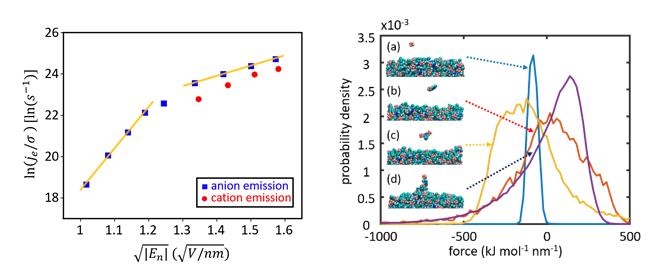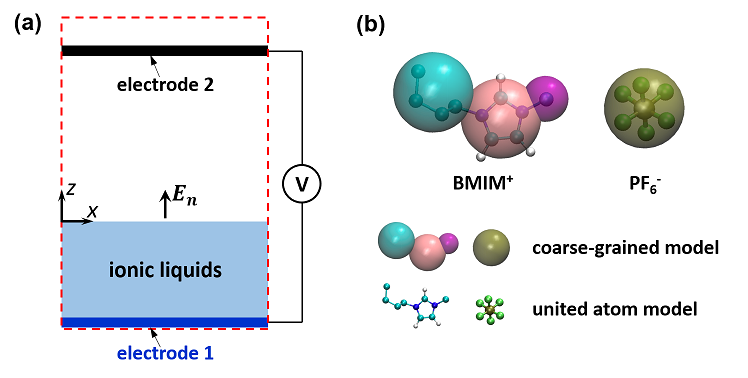Figure 1 (left) Schematic of the molecular dynamics (MD) simulation system. (right) Two models of [BMIM][PF6] used in MD simulations.
Dr. Xikai Jiang from the Micro/nanofluidics Group in State Key Laboratory of Nonlinear Mechanics at Institute of Mechanics, Chinese Academy of Sciences and his collaborators studied the electrospray of RTILs. They investigated electric-field-driven ion emission from the free surface of a planar RTIL film by using MD simulations. They calculated ion emission rate as a function of the electric field normal to the RTIL/vacuum surface and found that their relationship agrees with predictions from classical ion evaporation theories. “This is the very first time that the classical scaling law in ion evaporation theories is recovered in simulations”, said Dr. Jiang, the corresponding author of this study.

Figure 2 (left) Ion emission rate as a function of the electric field normal to the RTIL/vacuum surface. (right) Four metastable states of the emitting ion identified by replica exchange molecular dynamics (REMD) simulations.
The composition of emitted ions includes monomers and dimers. It was found that the monomer has to move across two barriers before emission: one above the RTIL/vacuum surface, which agrees with classical ion evaporation theories; one underneath the surface due to the unique structure of RTIL/vacuum surface as revealed by simulations. The fraction of dimers was found to depend on the external field and ion-ion interactions. To understand how different species form, researchers further performed REMD simulations and identified four metastable states of the emitting ion near the liquid film. These metastable states strongly affect the composition of ion emission.
Fundamental insights revealed in this study form the basis to improve ion evaporation theories and guide rational selection of RTILs to achieve desired ion emission characteristics. The above study is published on the Journal of Physical Chemistry Letters (2021, 12, 711–716, https://pubs.acs.org/doi/10.1021/acs.jpclett.0c03335), and is supported by the CAS Key Research Program of Frontier Sciences and the CAS Strategic Priority Research Program.
